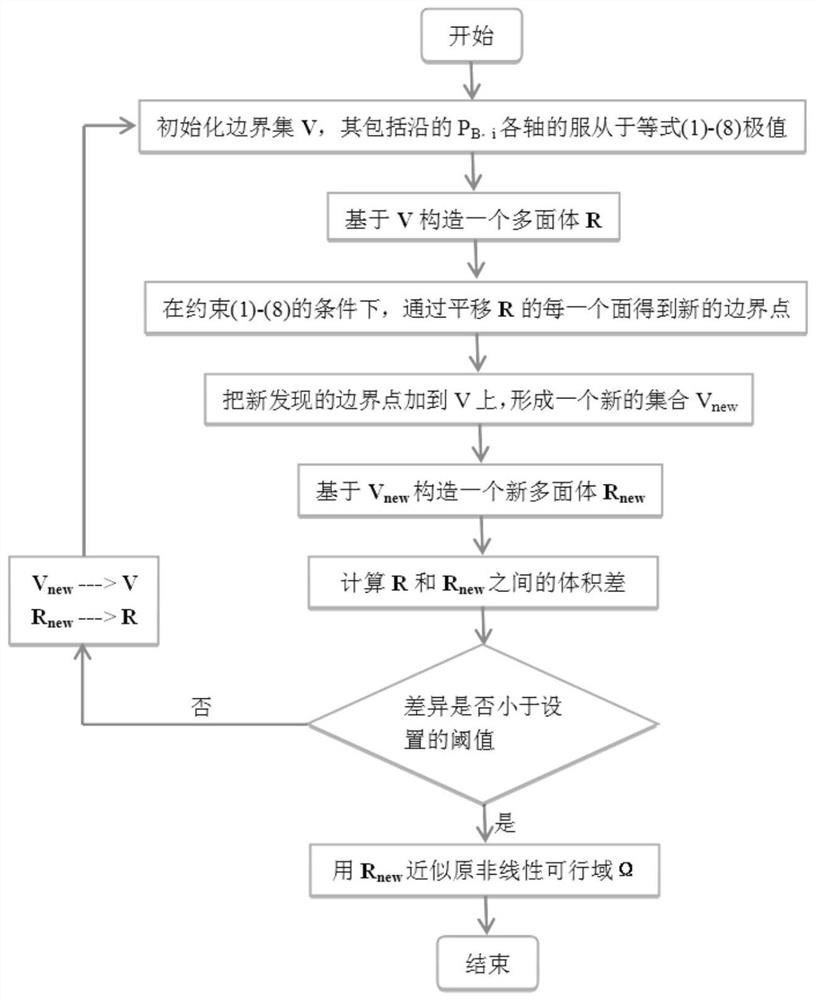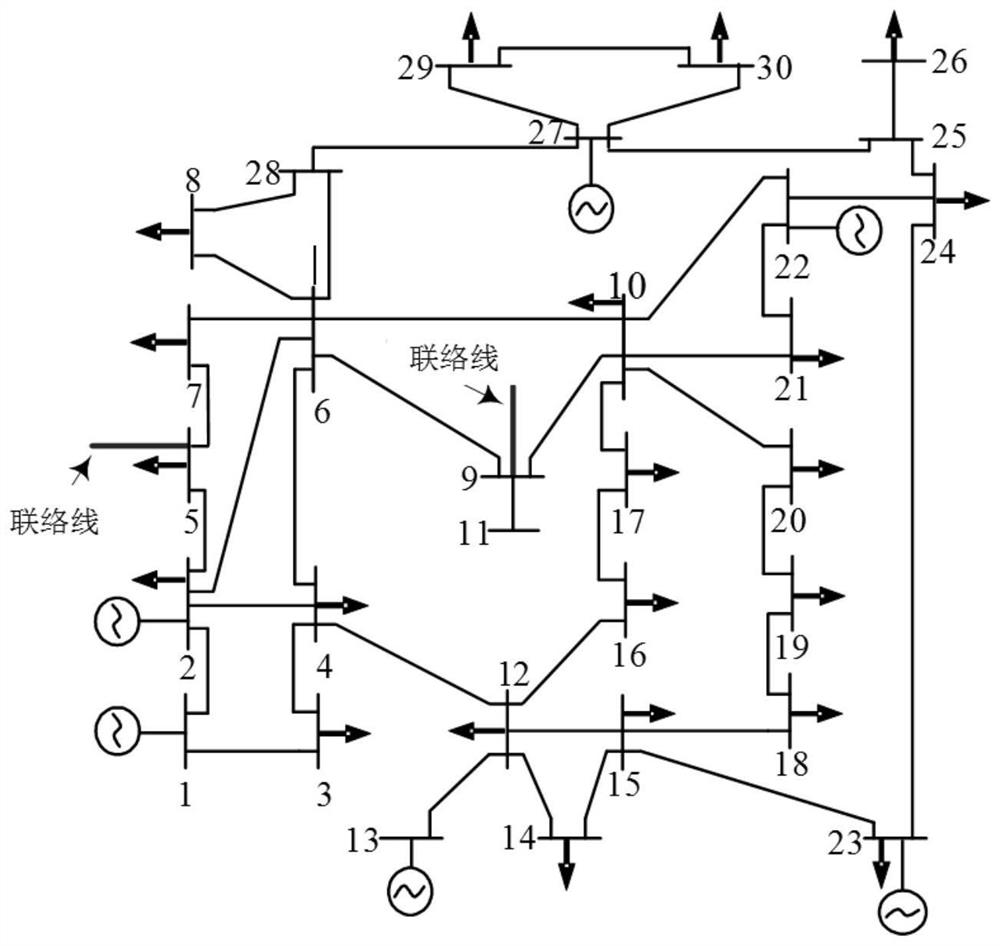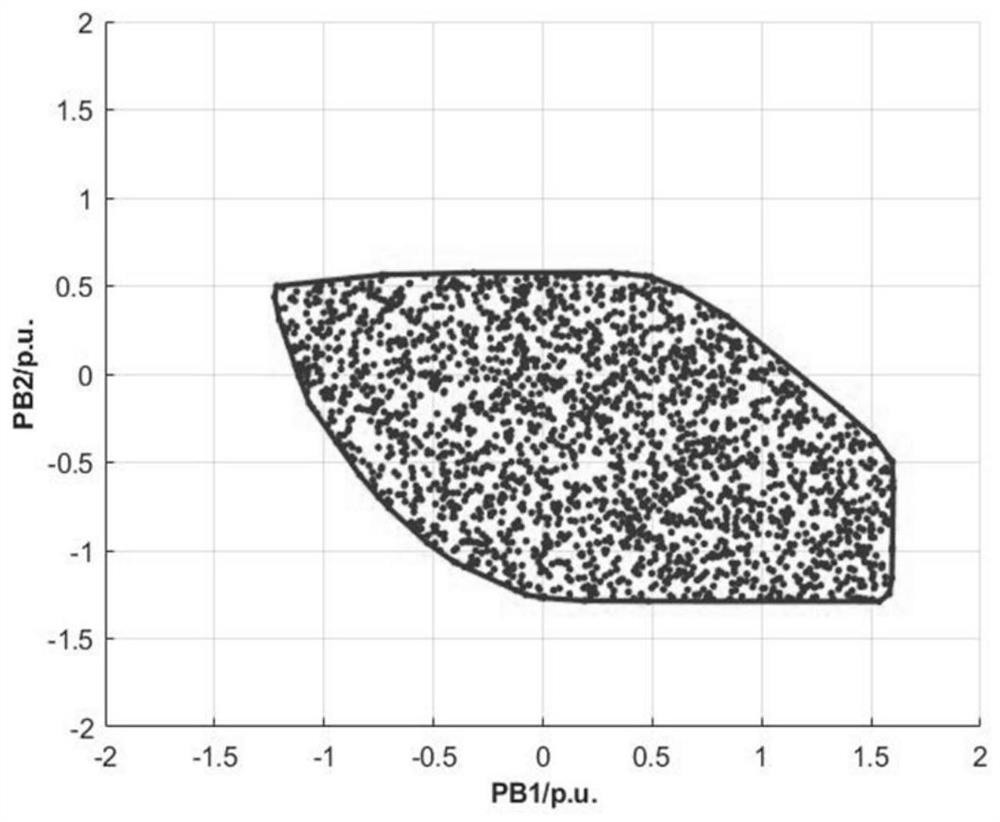Method for solving nonlinear power system tie line feasible region
A power system and tie line technology, applied in the field of solving the feasible region of nonlinear power system tie lines, can solve problems such as ignoring reactive power and voltage, ignoring regional power flow balance constraints, restrictions, etc.
- Summary
- Abstract
- Description
- Claims
- Application Information
AI Technical Summary
Problems solved by technology
Method used
Image
Examples
Embodiment 1
[0048] see figure 1 , a method for solving the feasible region of a nonlinear power system tie line, comprising the following steps:
[0049] 1) Establish constraints for tie line feasible region calculation.
[0050] The constraints include power balance constraints, transmission constraints, generator power constraints, and tie line power thermal constraints.
[0051] The power balance constraints include regional power flow constraints of active power balance and reactive power balance, namely:
[0052]
[0053]
[0054] In the formula, is the collection of buses in the grid. P L,i , P B,i and PG,i are the active load power, active tie line power and active generation level at bus i, respectively. Q L,i , Q B,i and Q G,i are the reactive load power, reactive tie line power and reactive power generation level at bus i, respectively. V i and V j are the voltage values at bus bar i and bus bar j, respectively. G ij and B ij are the conductance and admit...
Embodiment 2
[0084] A method for solving the feasible region of a tie line of a nonlinear power system, comprising the following steps:
[0085] 1) Establish constraints
[0086] a) Power balance constraints
[0087] The regional power system power flow constraints including active and reactive power balance can be represented by the following matrices and vectors:
[0088]
[0089]
[0090] in the formula is the set of buses in the grid; P L,i , P B,i , and P G,i are the active load power at bus i, active tie line power and active generation level; Q L,i , Q B,i , and Q G,i are the reactive load power at bus i, the reactive tie line power and the reactive power generation level; V i and V j are the voltage values at busbars i and j, respectively; G ij and B ij are the conductance and admittance of the i-j branch of the busbar, respectively; θ ij is the difference between the voltage phase angles at bus i and j.
[0091] b) Transmission constraints
[0092] The trans...
Embodiment 3
[0118] An accuracy verification test of a method for solving the feasible region of a tie line of a nonlinear power system, including the following procedures:
[0119] 1) Establish an IEEE-30 bus system, see figure 2 .
[0120] 2) Use the following three methods to describe the feasible area:
[0121] M0: Monte Carlo sampling method.
[0122] M1: Multi-segment boundary approximation method.
[0123] M2: The maximum transmission power method of the tie line.
[0124] like Figure 3-5 As shown, the feasible regions of the IEEE-30 node system are respectively described by the above three methods. PB1 and PB2 are the transmission power of the boundary tie line. Among them, positive values represent the tie-line power injected from other adjacent area networks to the boundary nodes of the area network, and negative values represent the tie-line power transmitted to other adjacent area networks.
[0125] like image 3 As shown, 5000 points are randomly sampled, and the...
PUM
 Login to View More
Login to View More Abstract
Description
Claims
Application Information
 Login to View More
Login to View More - R&D
- Intellectual Property
- Life Sciences
- Materials
- Tech Scout
- Unparalleled Data Quality
- Higher Quality Content
- 60% Fewer Hallucinations
Browse by: Latest US Patents, China's latest patents, Technical Efficacy Thesaurus, Application Domain, Technology Topic, Popular Technical Reports.
© 2025 PatSnap. All rights reserved.Legal|Privacy policy|Modern Slavery Act Transparency Statement|Sitemap|About US| Contact US: help@patsnap.com



